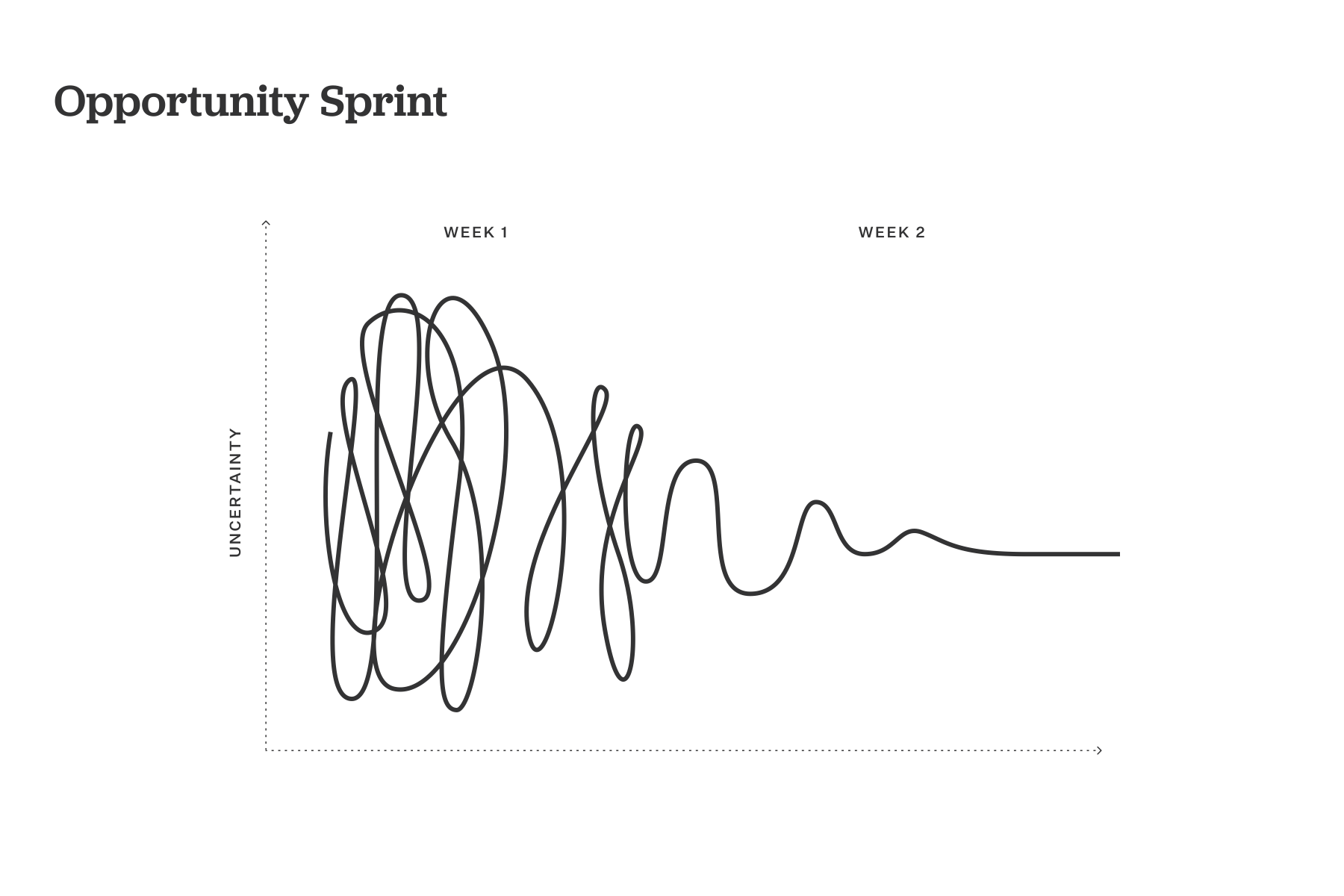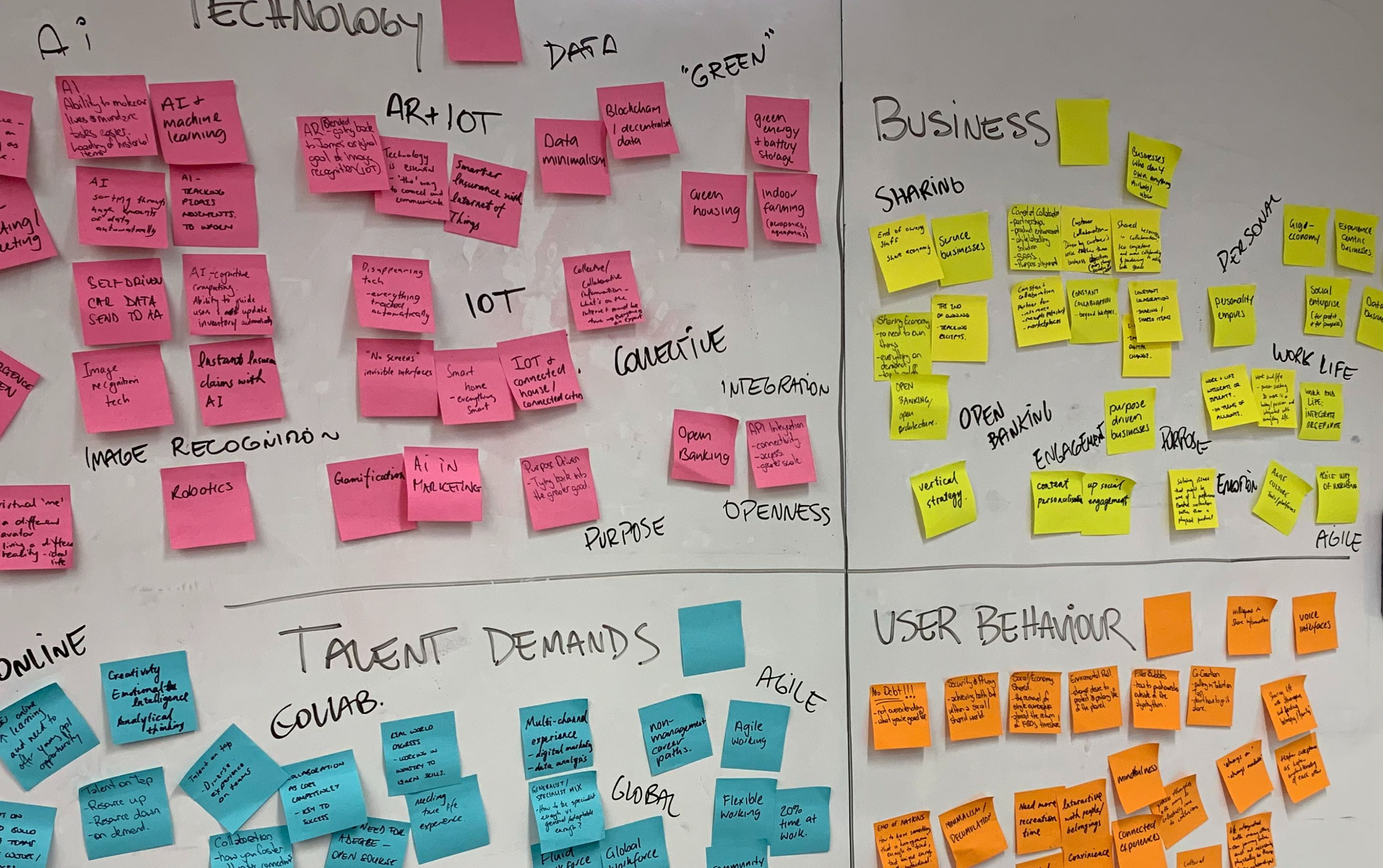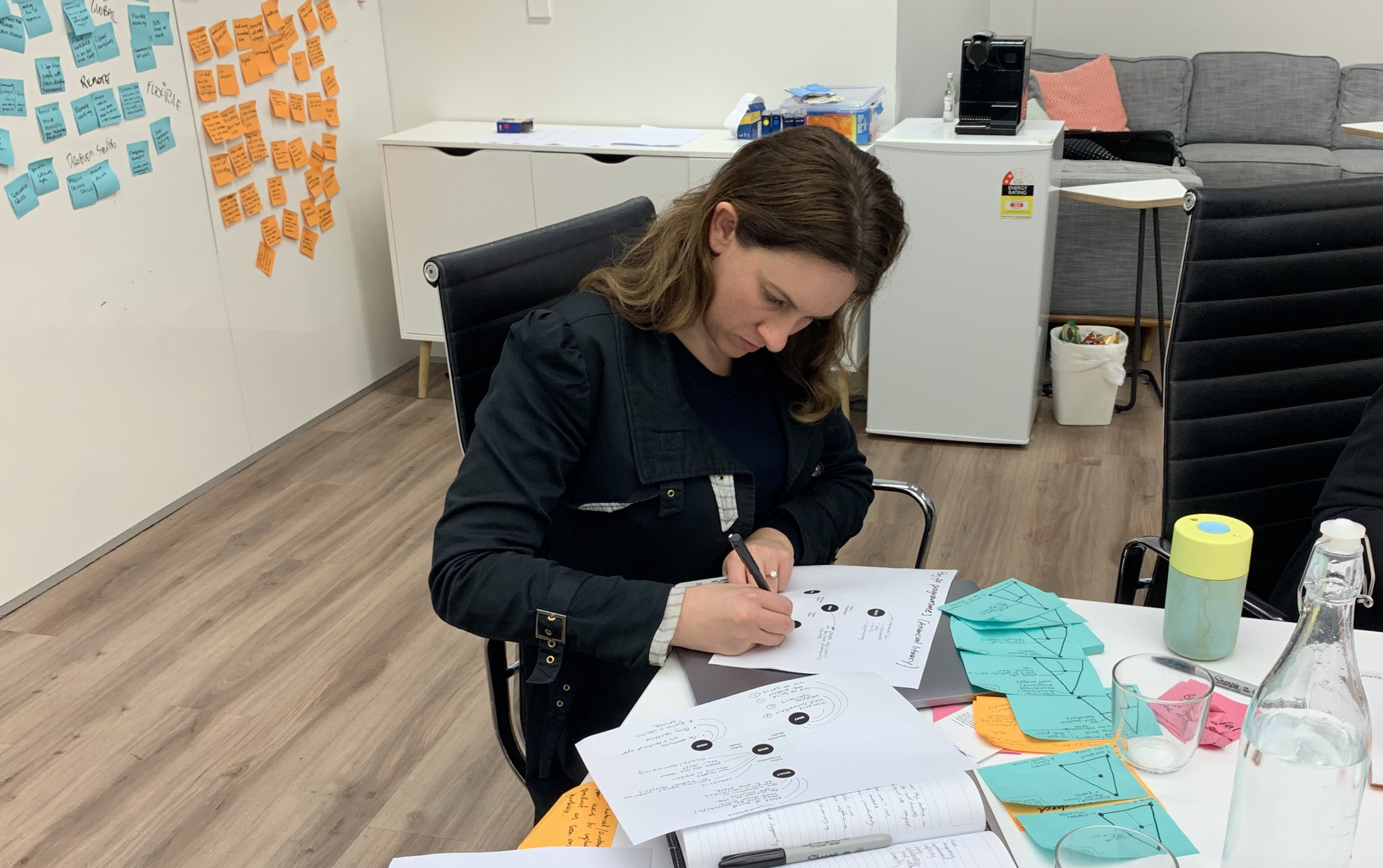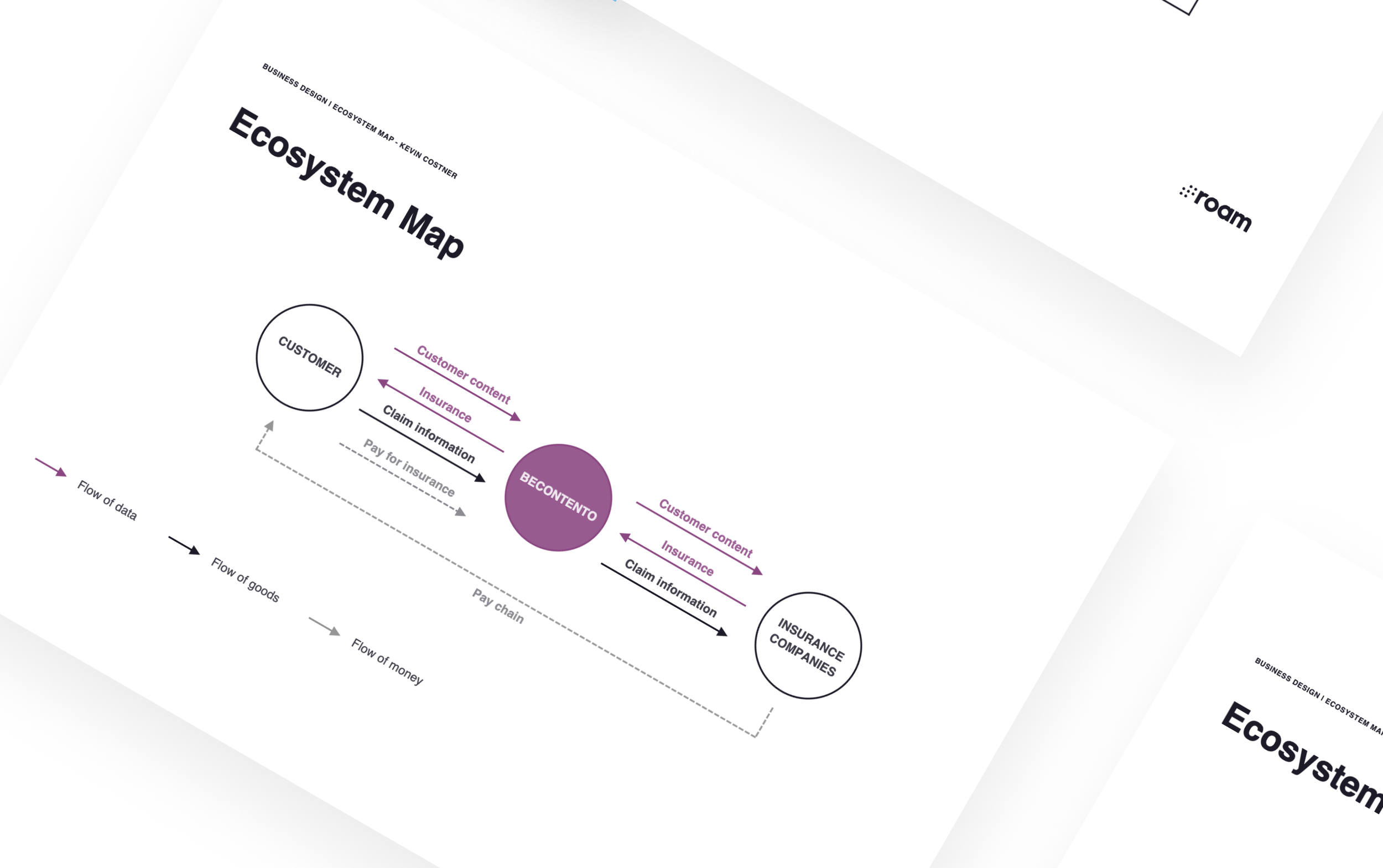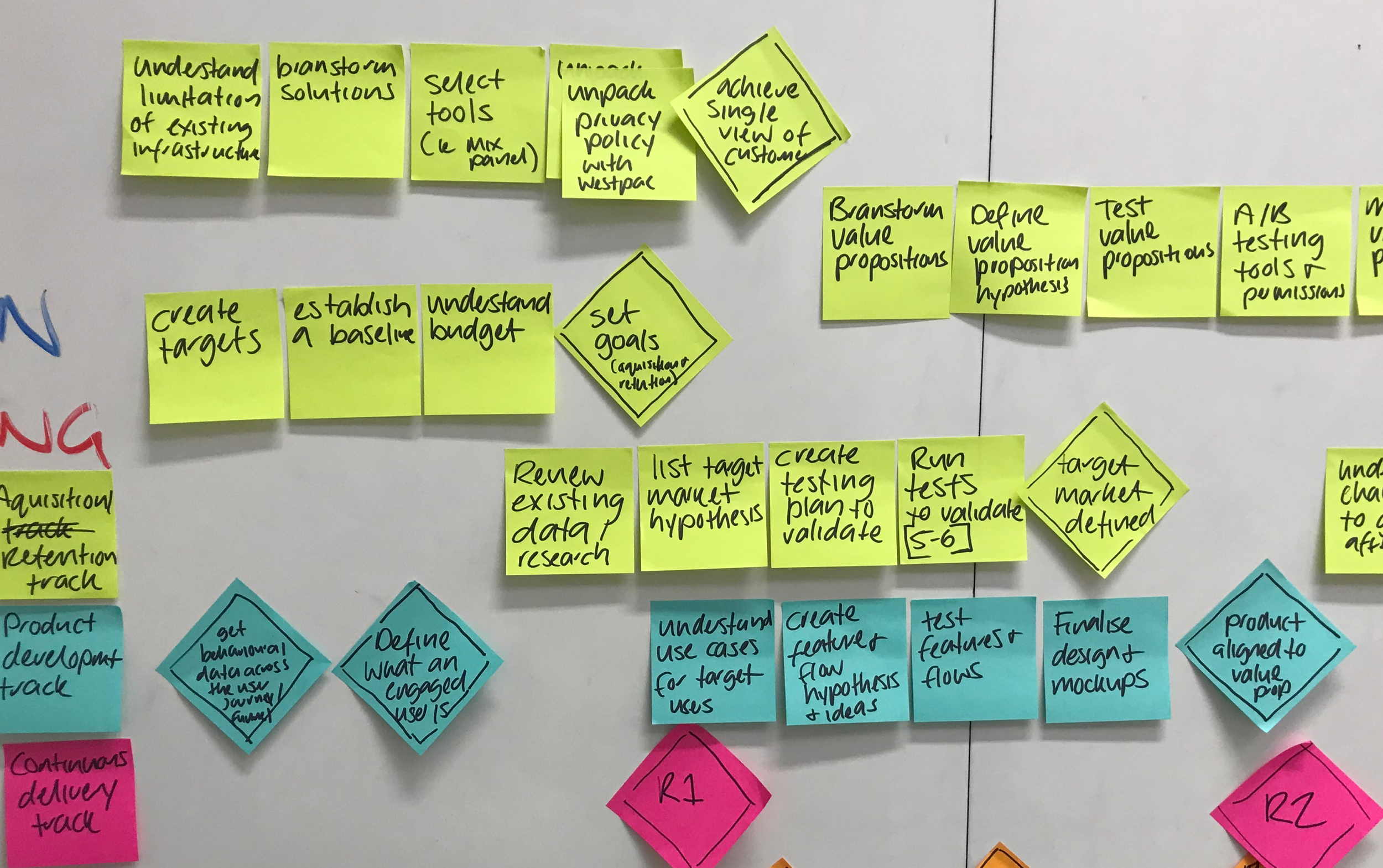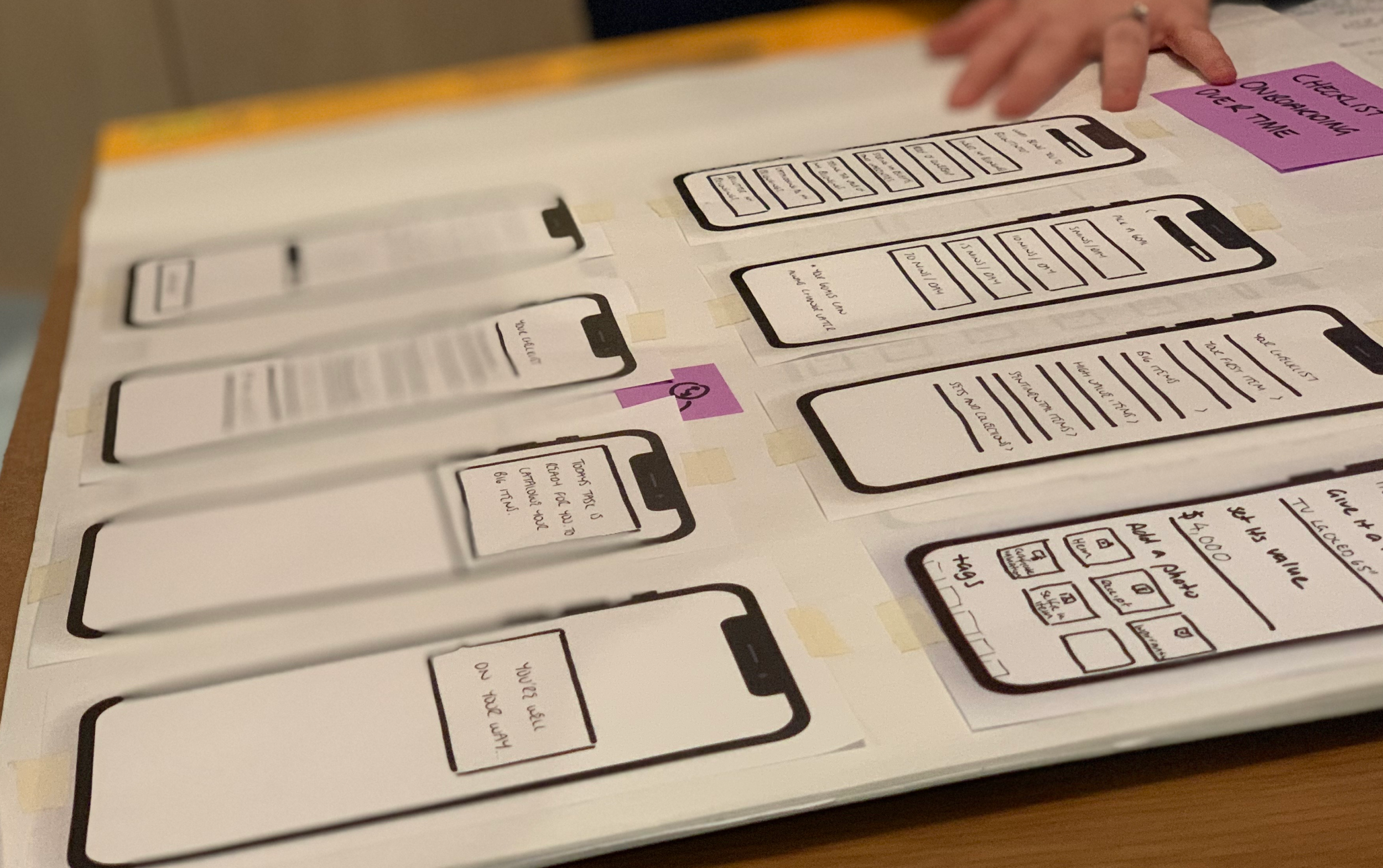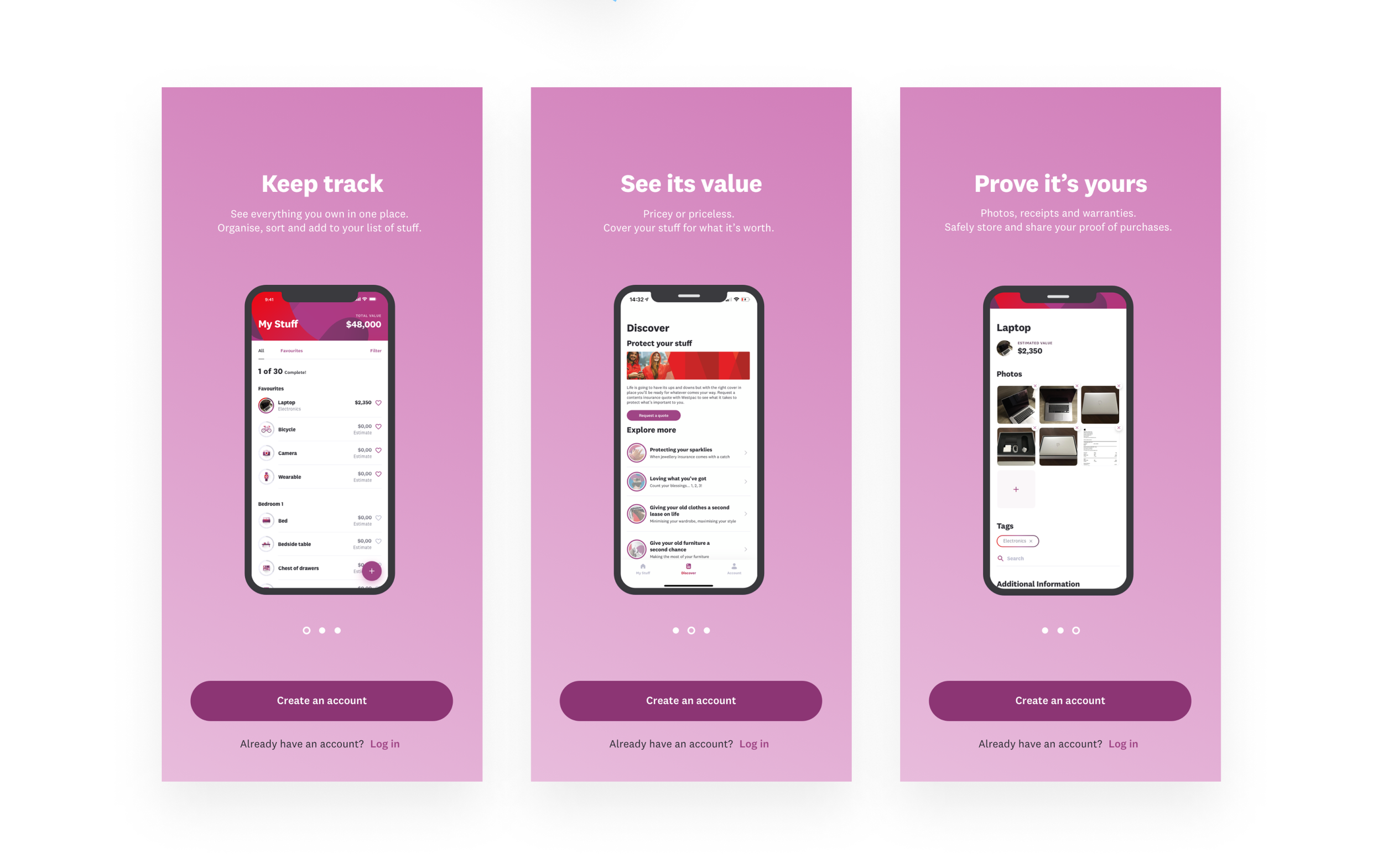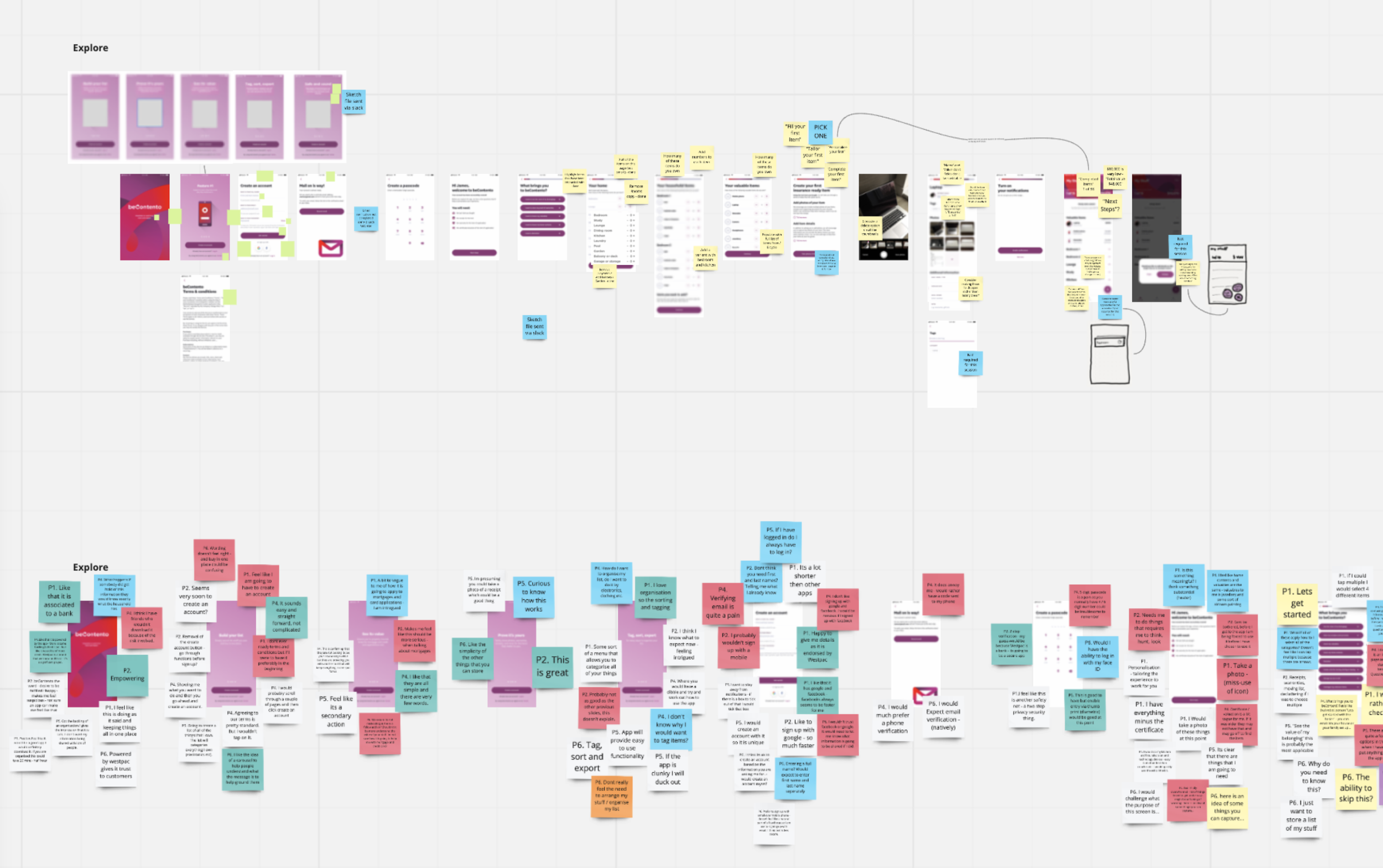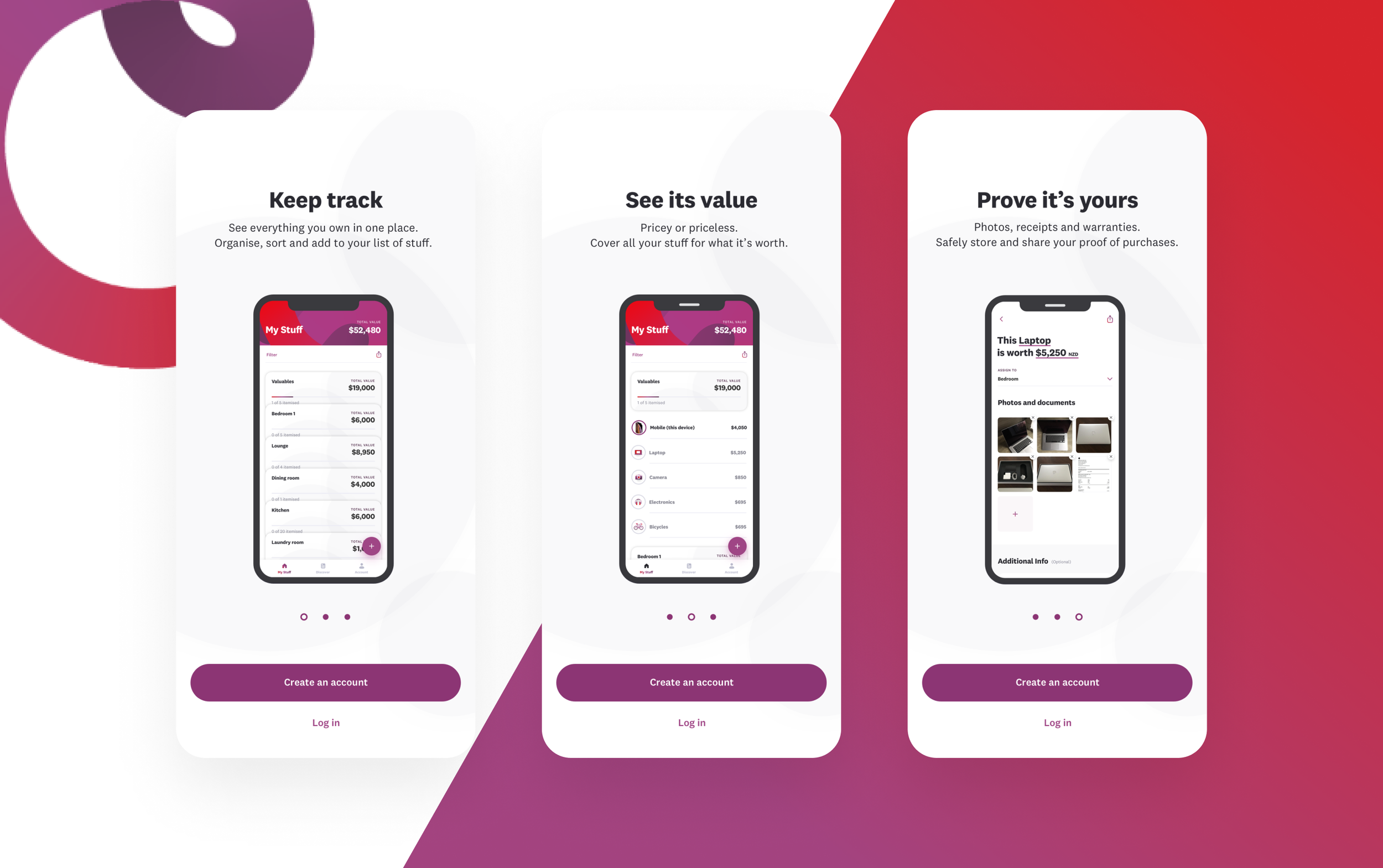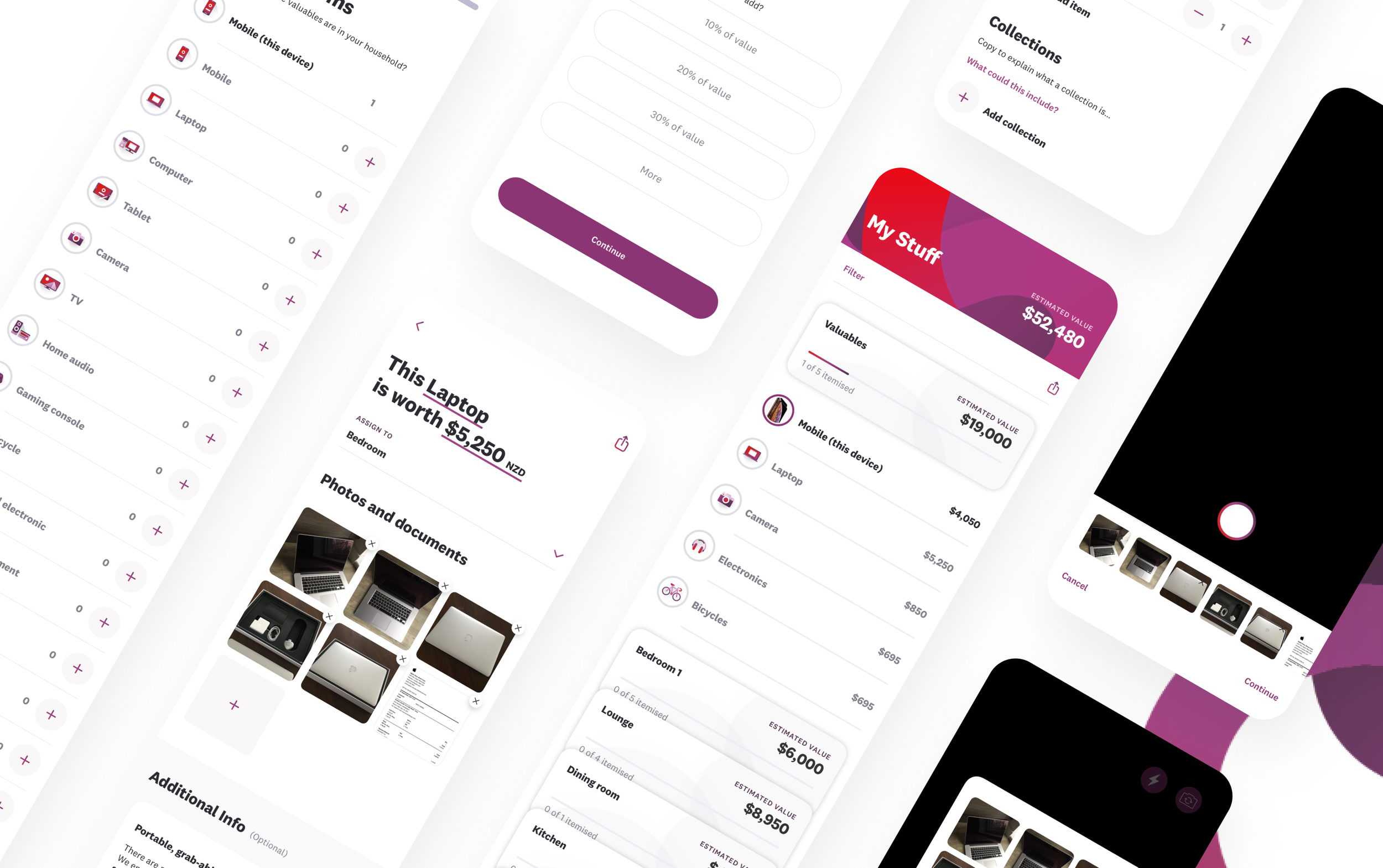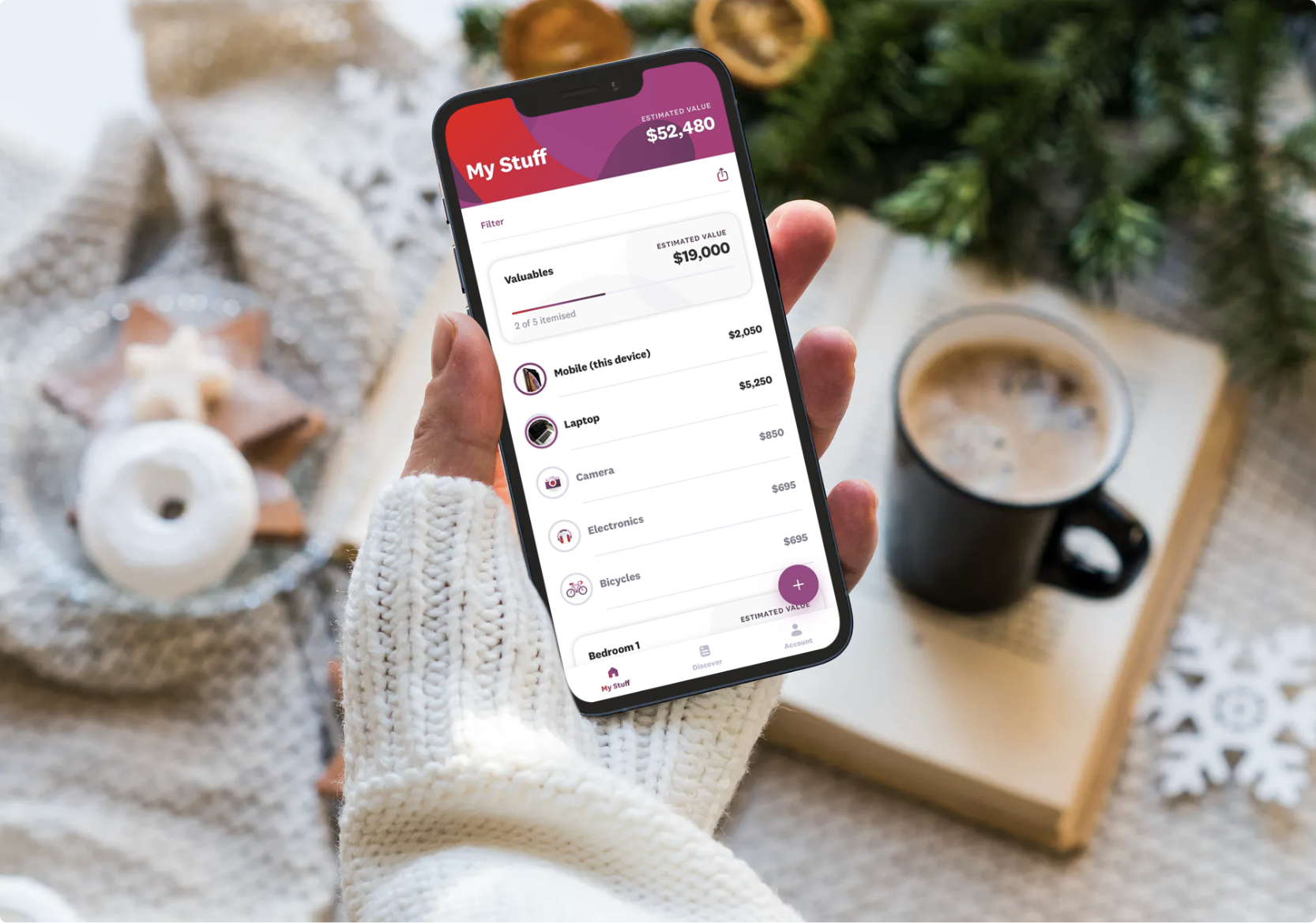
/ Project Story
beContento.
Rethinking the business strategy for a digital inventory of all your belongings in one convenient place (powered by Westpac).
Senior Designer • Roam Digital
/ An Overview
In need of a clearer business direction as it approaches the end of its funding, revise the beContento business model and align the app to focus on driving customers back and increasing retention.
As the Senior Designer, I collaborated closely with a team consisting of one other Product Designer, a Research Consultant, a Copywriter, and a Project Manager. My responsibilities included:
Setting the approach, shape, and coordinate design activities
Building a strong relationship with stakeholders
Planning and facilitating client touch points
Facilitating business strategy and design workshops
Creating, low and high-fidelity prototypes
Crafting the visual design direction
Supporting all usability testing
/ Approach
A structured two-week process for rapidly evaluating a digital business and digital product opportunity by testing the riskiest assumption(s) and deciding whether an opportunity is worth pursuing further.
/ Process
01.
Crafting Product Values
To kick off the project, we began by crafting a set of guiding principles that truly embody the essence of our product. This approach aimed not only to build upon the product's existing loyal customer base but also to establish a distinctive competitive advantage in the market.
02.
Future Trends Analysis:
Anticipating Tomorrow's Landscape
We conducted extensive research on emerging trends and industry changes, including technological advancements, shifting consumer behaviors, and economic conditions. This thorough analysis allowed us to identify potential opportunities, challenges, and threats, enabling us to stay ahead of the curve, adapt to market dynamics, and strategically position the product for success in an ever-evolving industry.
03.
Business Model Innovation (BMI):
Redefining the Blueprint for Success
We held a Business Model Innovation workshop with the primary goal of challenging the existing business model. From this workshop, we shortlisted three ideas for further exploration based on their popularity and perceived value.
04.
Ecosystem Mapping:
Unveiling Industry Dynamics
As part of our efforts to gain a better understanding of the industry landscape, we conducted Ecosystem Mapping to explore the complex relationships within the industry. By understanding these relationships, we developed strategies to leverage the industry ecosystem to our advantage.
05.
Planning Next Steps
We mapped a journey, remaining mindful of the need for flexibility and the importance of adapting our activities based on feedback and emerging insights within our project timeframe. By carefully considering the journey and each dependency, we ensured a structured approach while allowing room for adjustments and refinements along the way.
06.
Paper Prototyping to Concept Testing:
From Vision to Validation
As part of our iterative design process, we developed paper prototypes for concept testing with a group of six participants. These participants, aged 18 to 49, owned a significant amount of personal or household belongings that would be expensive, difficult, or heartbreaking to replace if lost unexpectedly. We gained valuable insights into their perspectives on the purpose, functionality, and relevance.
07.
Design Ideation:
Fueling Innovation with Insights
Leveraging insights from concept testing, we generated a wealth of new ideas and opportunities. This feedback sparked innovation, allowing us to explore fresh perspectives and develop a diverse range of solutions. By aligning our efforts with customer expectations and addressing their pain points, we created a solution that effectively met their needs.
08.
Usability Testing:
Refining the User Experience
We conducted a round of usability testing with six participants from our target audience. During the testing sessions, we focused on several key aspects, including ease of completing common tasks, ease of finding relevant information, effectiveness of the design, clarity, conciseness, relevance of content, overall satisfaction, and likelihood of recommendation.
09.
Design Ideation:
Bridging Vision and Execution
Drawing inspiration from the insights gained through usability testing, we enhanced the experience by implemented several key improvements, including streamlined onboarding, conversational copy, and a new Buffer feature to bring our vision to life.
For an in-depth look at the project and its outputs, please click here
/ The Outputs
SMART product goals with measurable metrics to track achievements within one year.
A revised business model that integrates insurance to entice users to update their inventory when they make a new purchase and keep coming back.
An ecosystem map that highlights the complex relationships and dynamics that exist with the new business model.
A validated prototype that helps customers visualise, value, and insure everything they own from their phone.
/ The Results
Secured a significant budget allocation for a second round of funding from esteemed investors, affirming trust and confidence in our vision and strategy.
Celebrating a remarkable 35% surge in the influx of new users who diligently return to update their inventories with each new purchase, thereby proactively safeguarding their assets and ensuring optimal coverage in alignment with their evolving needs. This noteworthy increase not only underscores the effectiveness of our user engagement initiatives but also signifies a growing recognition of the value we bring to our users' lives.
